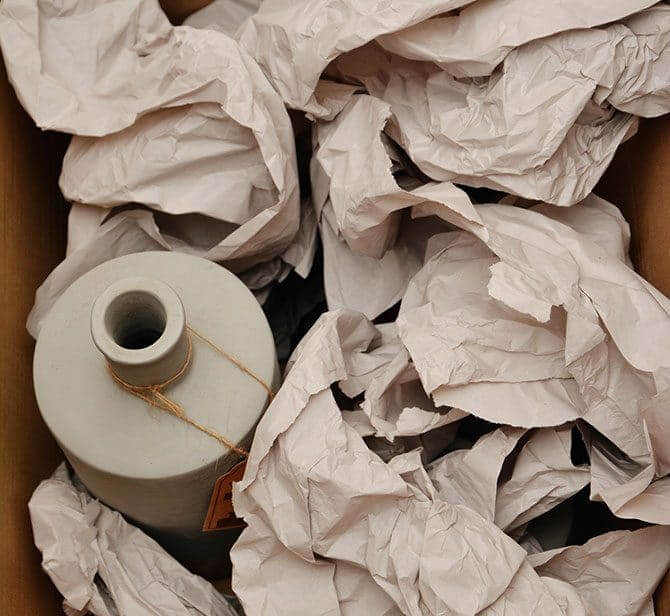Plates should be individually wrapped and then stood on their side in the box with a cloud of soft stuff underneath. NEVER lay plates flat – all the weight would then be on the bottom plate and if the box is set down too strongly, the bottom plate could break.
A good idea is to pack 6-8 plates with paper plates or styrofoam plates separating each of them as shown in the 3 picture sequence below.

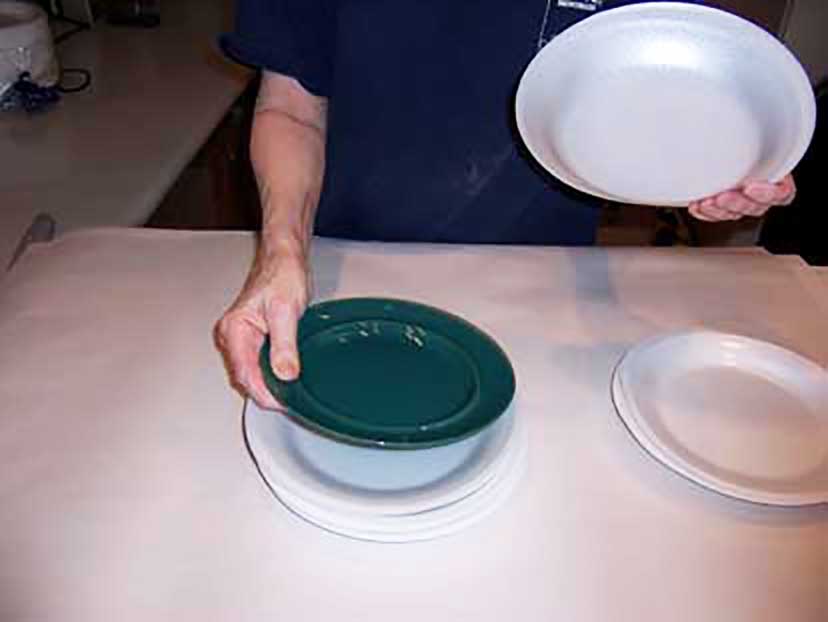
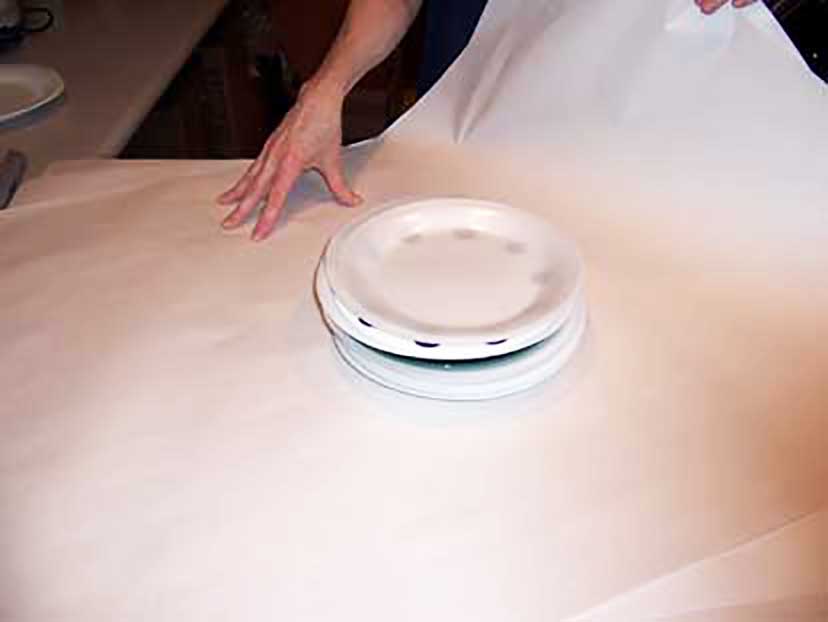
Then wrap them all up into one papered bundle and label it as shown in the 2 picture sequence below.
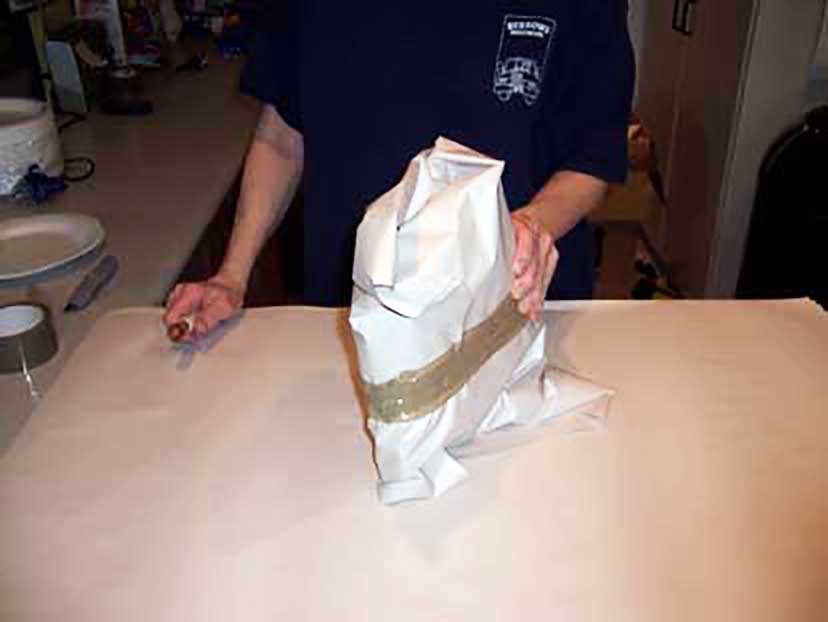
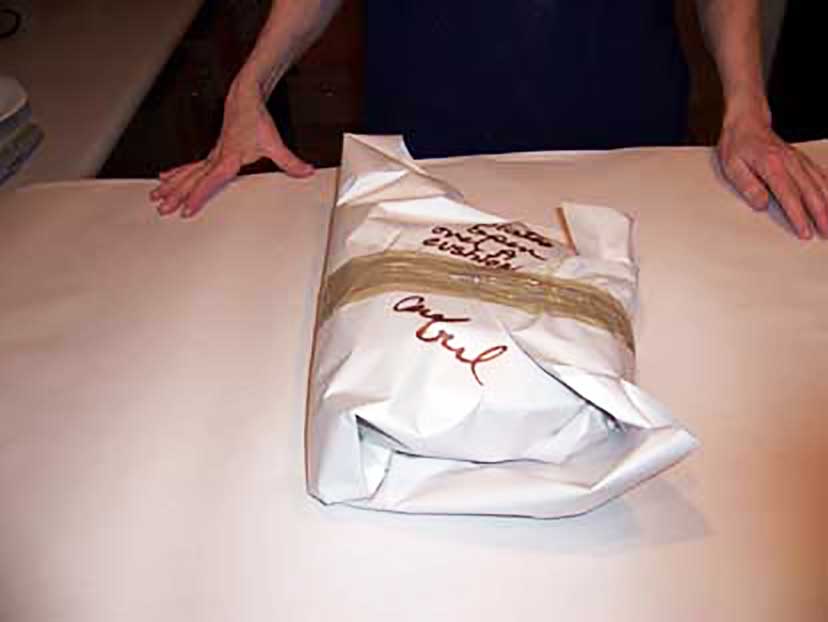
Pack these plate bundles in a box, being careful not to let the box exceed 50 lbs.
Don’t mix them in a box with
Use plenty of paper to line the top, bottom
Clearly label boxes of
Packing plates and dishes for moving is a slow packing task that may end up with plenty of broken china pieces, and even tears of some of those ruined flatware pieces have been family heirlooms. For best results, get in touch with professional packers for fast and safe packing of your fragile kitchen items.
